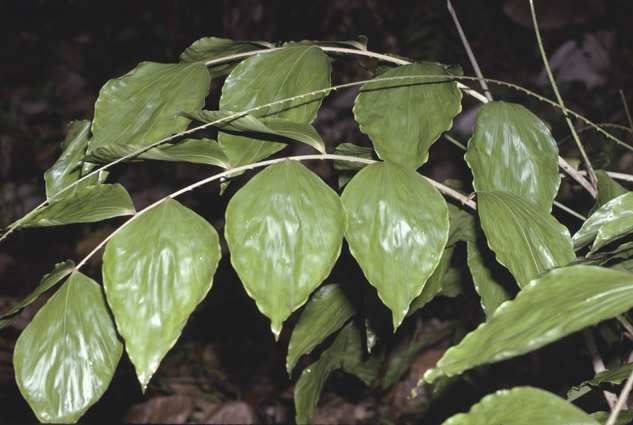- Acanthophoenix
- Acrocomia
- Actinokentia
- Actinorhytis
- Adonidia
- Aiphanes
- Allagoptera
- Ammandra
- Aphandra
- Archontophoenix
- Areca
- Arenga
- Asterogyne
- Astrocaryum
- Attalea
- Bactris
- Balaka
- Barcella
- Basselinia
- Beccariophoenix
- Bismarckia
- Borassodendron
- Borassus
- Brassiophoenix
- Burretiokentia
- Butia
- Calyptrocalyx
- Calyptrogyne
- Calyptronoma
- Carpentaria
- Carpoxylon
- Caryota
- Ceratolobus
- Ceroxylon
- Chamaedorea
- Chamaerops
- Chambeyronia
- Chelyocarpus
- Chuniophoenix
- Clinosperma
- Coccothrinax
- Cocos
- Corypha
- Cryosophila
- Cyphokentia
- Cyphophoenix
- Cyphosperma
- Daemonorops
- Deckenia
- Desmoncus
- Dictyocaryum
- Drymophloeus
- Dypsis
- Elaeis
- Eleiodoxa
- Eremospatha
- Eugeissona
- Euterpe
- Gaussia
- Geonoma
- Guihaia
- Hedyscepe
- Hemithrinax
- Howea
- Hyophorbe
- Hyospathe
- Hyphaene
- Iriartea
- Iriartella
- Itaya
- Jailoloa
- Johannesteijsmannia
- Juania
- Jubaea
- Jubaeopsis
- Kentiopsis
- Kerriodoxa
- Korthalsia
- Laccospadix
- Laccosperma
- Lanonia
- Latania
- Lemurophoenix
- Leopoldinia
- Lepidocaryum
- Lepidorrhachis
- Leucothrinax
- Licuala
- Linospadix
- Livistona
- Lodoicea
- Lytocaryum
- Manicaria
- Manjekia
- Marojejya
- Masoala
- Mauritia
- Mauritiella
- Maxburretia
- Medemia
- Metroxylon
- Myrialepis
- Nannorrhops
- Nenga
- Neonicholsonia
- Neoveitchia
- Nephrosperma
- Normanbya
- Nypa
- Oenocarpus
- Oncocalamus
- Oncosperma
- Orania
- Oraniopsis
- Parajubaea
- Pelagodoxa
- Phoenicophorium
- Phoenix
- Pholidocarpus
- Pholidostachys
- Physokentia
- Phytelephas
- Pigafetta
- Pinanga
- Plectocomia
- Plectocomiopsis
- Podococcus
- Pogonotium
- Ponapea
- Prestoea
- Pseudophoenix
- Ptychococcus
- Ptychosperma
- Raphia
- Ravenea
- Reinhardtia
- Retispatha
- Rhapidophyllum
- Rhapis
- Rhopalostylis
- Roscheria
- Roystonea
- Sabal
- Sabinaria
- Salacca
- Saribus
- Satakentia
- Satranala
- Schippia
- Sclerosperma
- Socratea
- Solfia
- Sommieria
- Syagrus
- Synechanthus
- Tahina
- Tectiphiala
- Thrinax
- Trachycarpus
- Trithrinax
- Veitchia
- Verschaffeltia
- Voanioala
- Wallaceodoxa
- Wallichia
- Welfia
- Wendlandiella
- Wettinia
- Wodyetia
- Zombia
- x Jubautia splendens
- ?? Acoelorrhaphe
- ?? Bentinckia
- ?? Brahea
- ?? Clinostigma
- ?? Colpothrinax
- ?? Copernicia
- ?? Cyrtostachys
- ?? Dictyosperma
- ?? Dransfieldia
- ?? Heterospathe
- ?? Hydriastele
- ?? Iguanura
- ?? Incertae sedis & excluded names
- ?? Loxococcus
- ?? Micronoma
- ?? Paripon
- ?? Pritchardia
- ?? Rhopaloblaste
- ?? Serenoa
- ?? Washingtonia

Distribution
Scattered throughout Brunei but nowhere very abundant. Elsewhere throughout Borneo, Sumatra, Peninsular Malaysia and S Thailand. (Dransfield, J. 1997: The Rattans of Brunei Darussalam)A
Discussion
- C. blumei is very easily identified with its diamond-shaped leaflets and ecirrate leaf; it is often confused with some species of Korthalsia andCeratolobus but there is no justification for this mistake - leaflets are diamond-shaped but they are not praemorse (with jagged edges) as in the last two genera. Furthermore the presence of a flagellum will immediately indicate a species of Calamus. C. blumei occurs in a variety of forest types from sea level up to about 800 m elevation. It is shy to flower. (Dransfield, J. 1997: The Rattans of Brunei Darussalam)A
Etymology
- C. L. Blume, the early Dutch botanist (Dransfield, J. 1997: The Rattans of Brunei Darussalam)A
Uses
- A good quality cane. (Dransfield, J. 1997: The Rattans of Brunei Darussalam)A
Description
- Clustering moderate rattan climbing to 20 m; stem without sheaths 8-12 mm diam., with sheaths to 20 mm diam., internodes to 25 cm. Sheaths dull green but densely covered in greyish-yellow scales, drying grey, and scurfy caducous chocolate-coloured scales, and sparsely armed with short ± upward pointing spines to 3 mm, frequently borne on bulbous swellings; knee conspicuous; ocrea to 2 cm, dark brown. Flagellum to 1.5 m. Leaf ecirrate, to 60 cm long including the petiole to 15 cm; leaflets to 6 on each side of the rachis, broad diamond-shaped, with short stalks and bristly wavy margins, to 20 × 7.5 cm, with 5-7 main nerves. Inflorescences to 1.25 m with 3-4 partial inflorescences to 35 cm; male rachillae c. 1.5 cm long, female to 13 cm. Mature fruit rounded to obovoid or ellipsoid, to 22 × 17 cm, covered in 18-20 vertical rows of yellowish to brownish scales. Seed to 13 × 10 mm; endosperm deeply ruminate. Seedling leaf with 2 diamond-shaped leaflets. (Fig. 55). (Dransfield, J. 1997: The Rattans of Brunei Darussalam)A
Materials Examined
- BEL: Bukit Sawat, Jln.Labi, Wong 542; Sungei Liang, Andulau F.R., Dransfield J. 7253. TEM: Amo, Bt.Belalong, Dransfield J. 7131; Amo, Sg.Temburong Machang, Wong 1987. (Dransfield, J. 1997: The Rattans of Brunei Darussalam)A
- Log in to post comments

